Abstract
1. The abdominal circulation of anaesthetized dogs was vascularly isolated without opening the abdomen, by cutting or tying all structures immediately above the diaphragm and tying the proximal ends of the hind limbs. The region was perfused at constant flow through the aorta and drained at constant pressure from the inferior vena cava. 2. Vascular resistance responses were expressed as the changes in perfusion pressure and capacitance responses were determined by integrating changes in vena caval outflow. 3. Decreasing the pressure in the isolated carotid sinuses over the whole baroreceptor sensitivity range increased mean perfusion pressure from 91 to 149 mmHg (a 67% increase in resistance) and decreased mean capacitance by 111 ml. (5 ml. kg-1). 4. The range of carotid sinus pressures over which capacitance responses occurred was at a significantly higher level than the corresponding range for resistance responses. 5. Comparison of the reflex responses with the responses to direct stimulation of efferent sympathetic nerves shows that quantitatively similar responses of resistance and capacitance to those induced by a large step decrease in carotid pressure could be produced by stimulating maximally the efferent sympathetic nerves at 5 Hz. These results also suggest that at all levels of carotid sinus pressure there is no difference in the impulse traffic to resistance and capacitance vessels.
Full text
PDF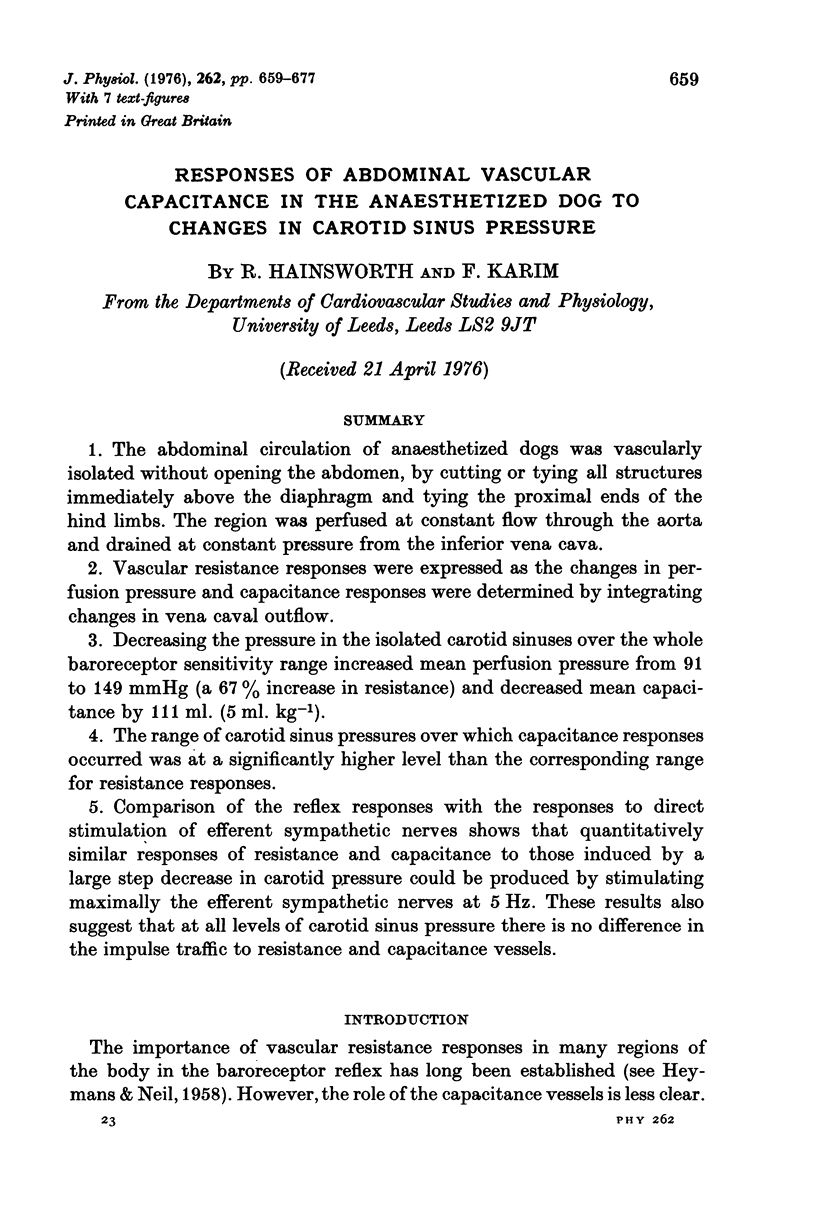
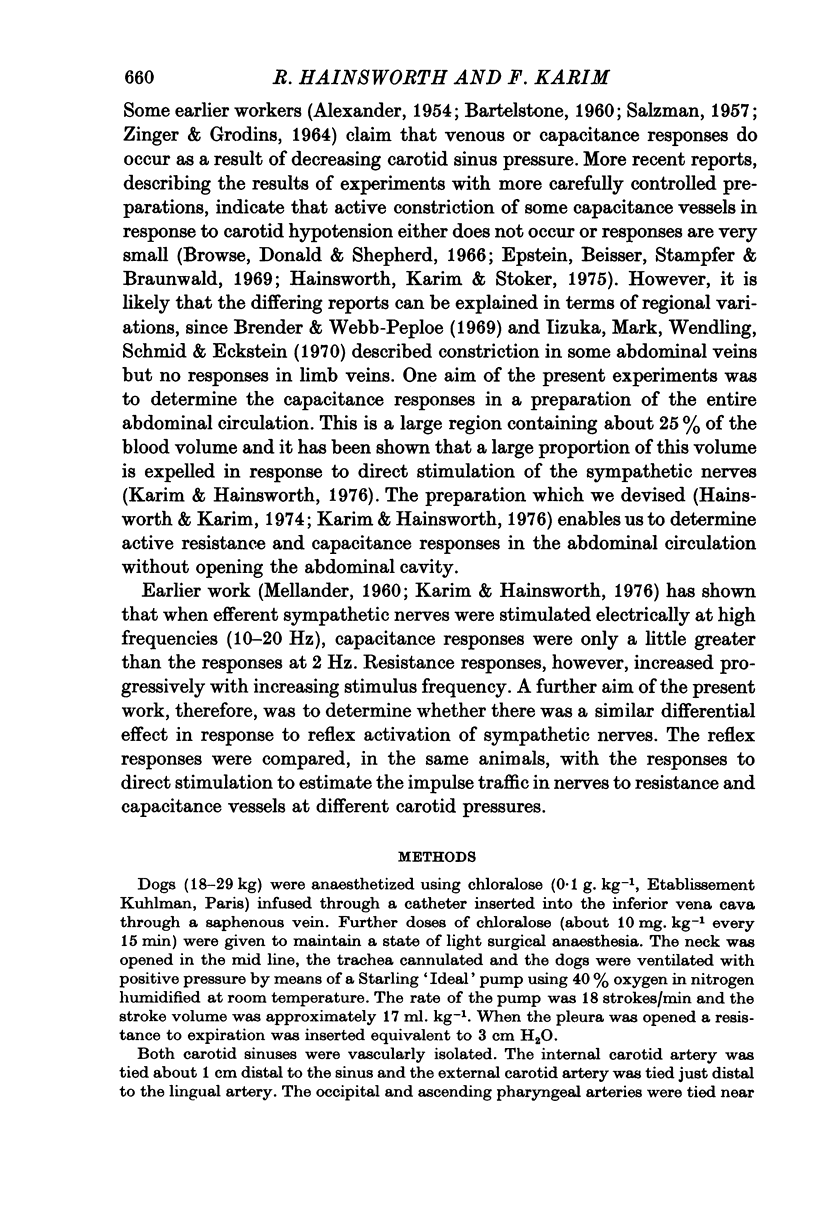
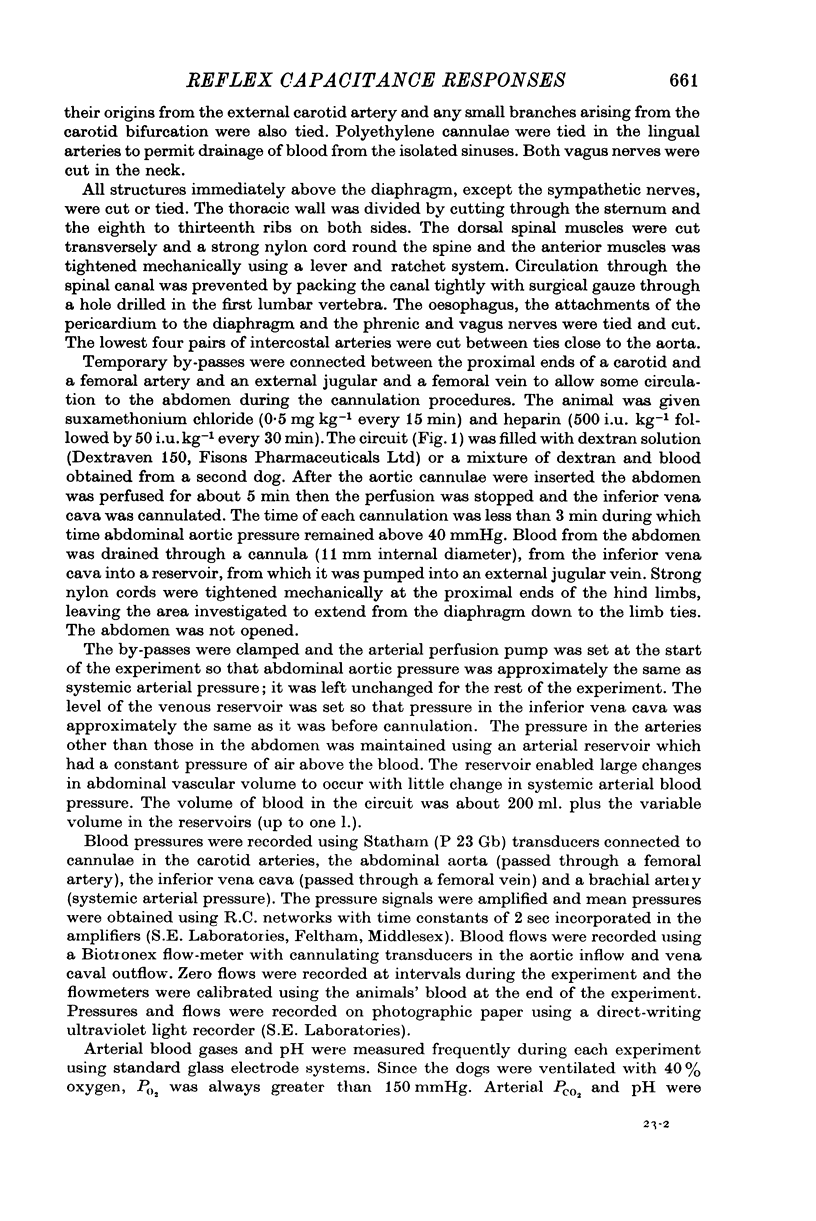
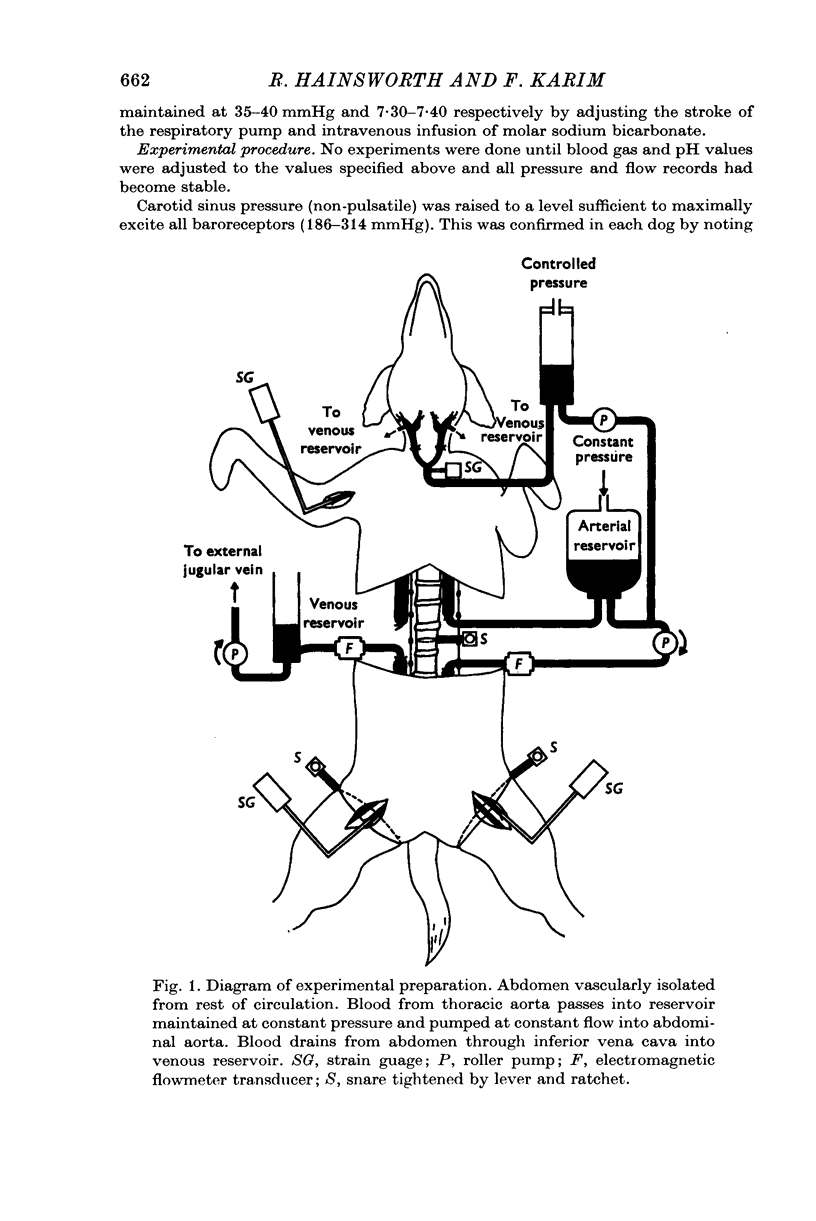
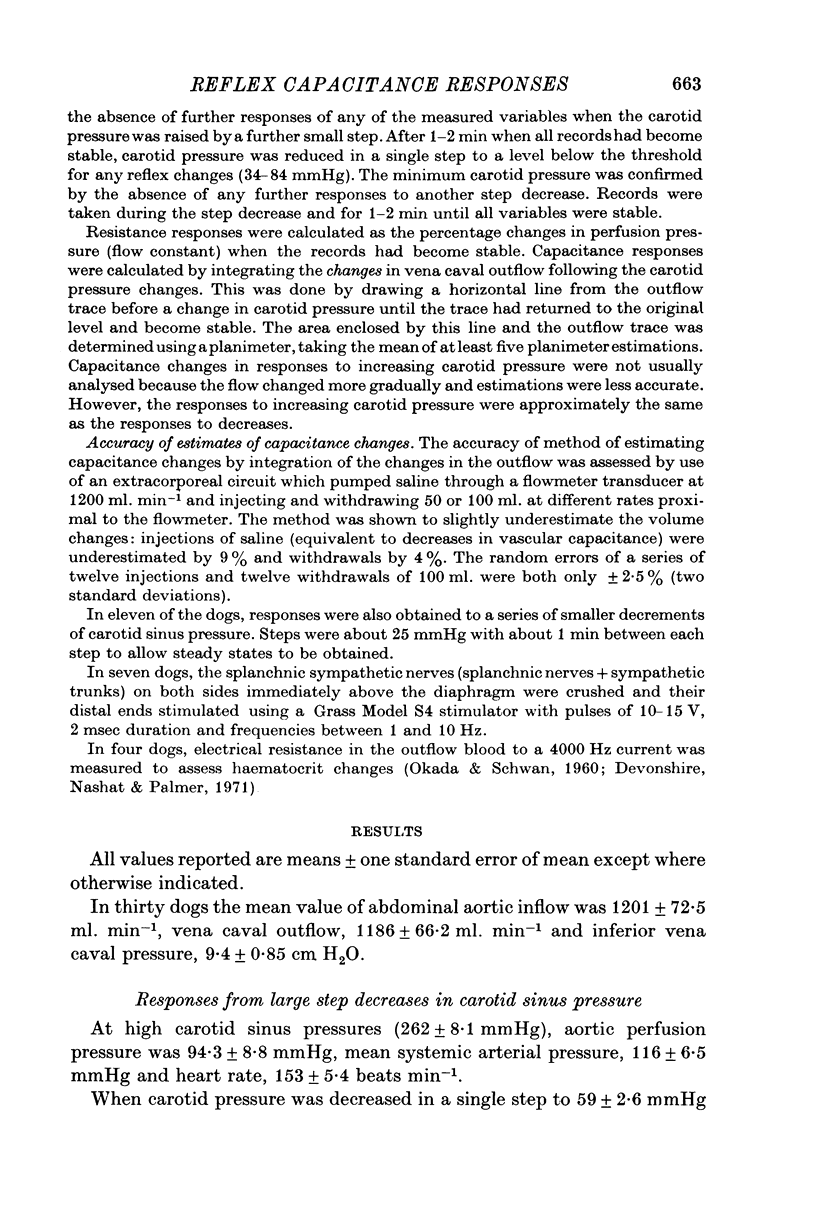
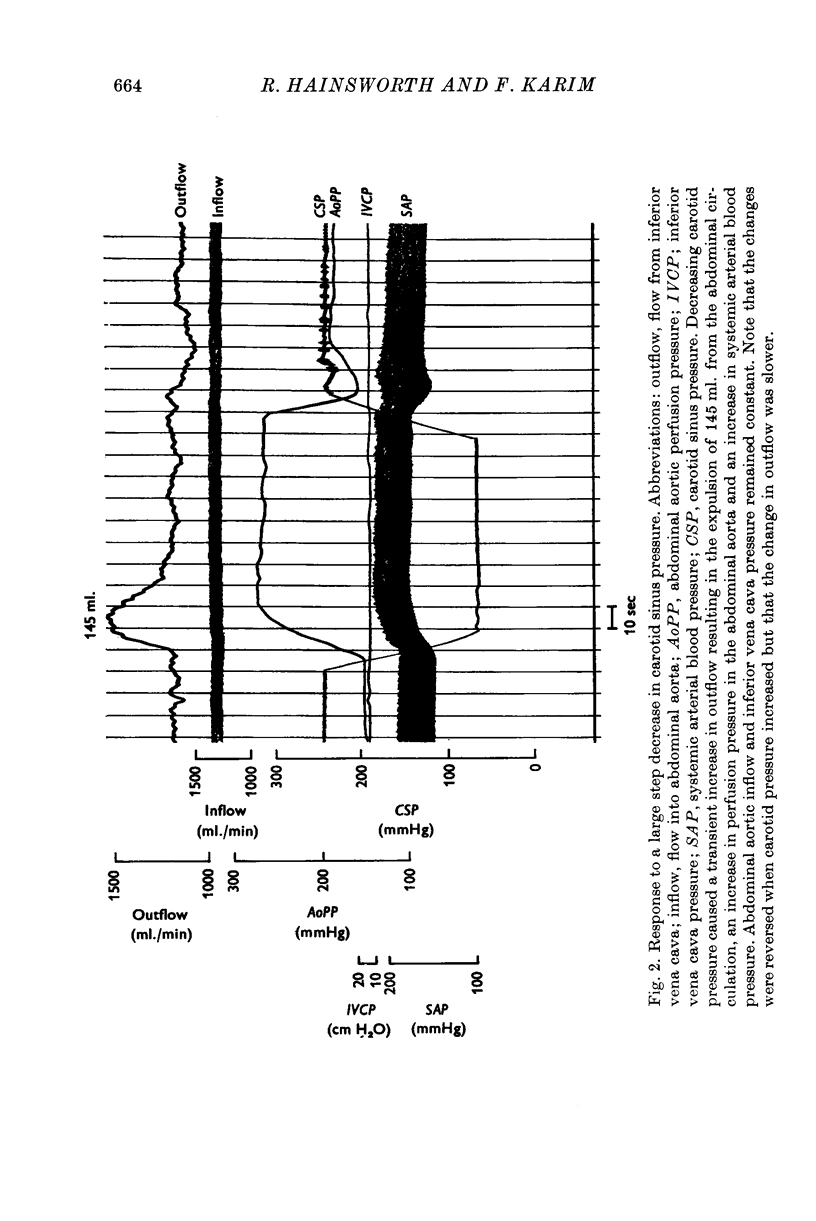
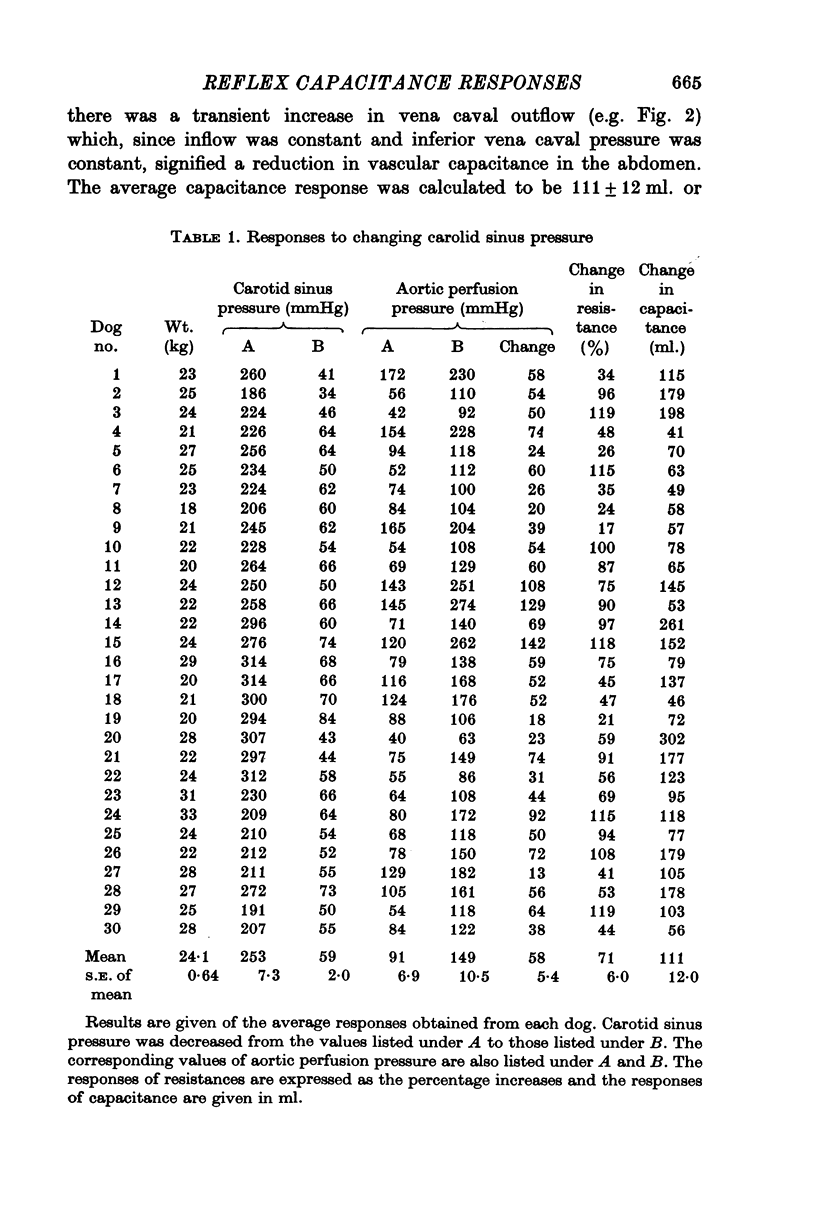
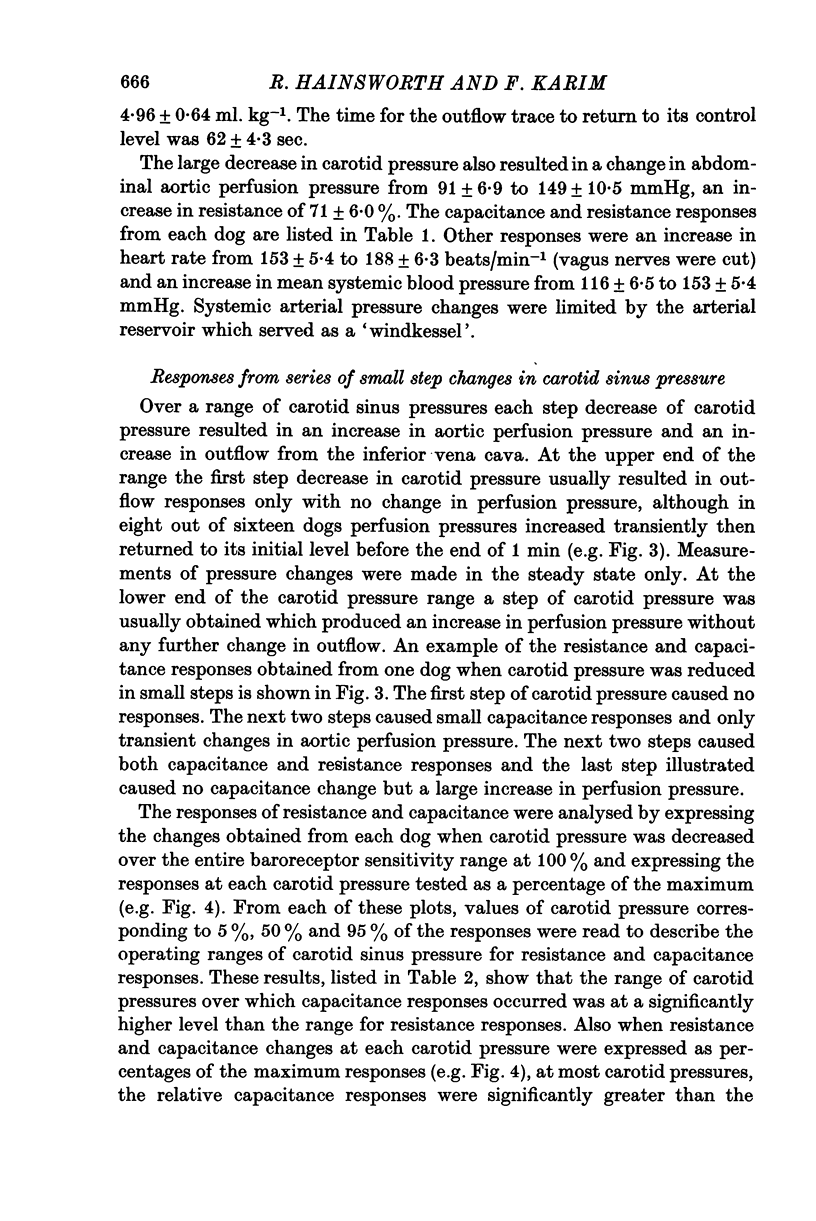
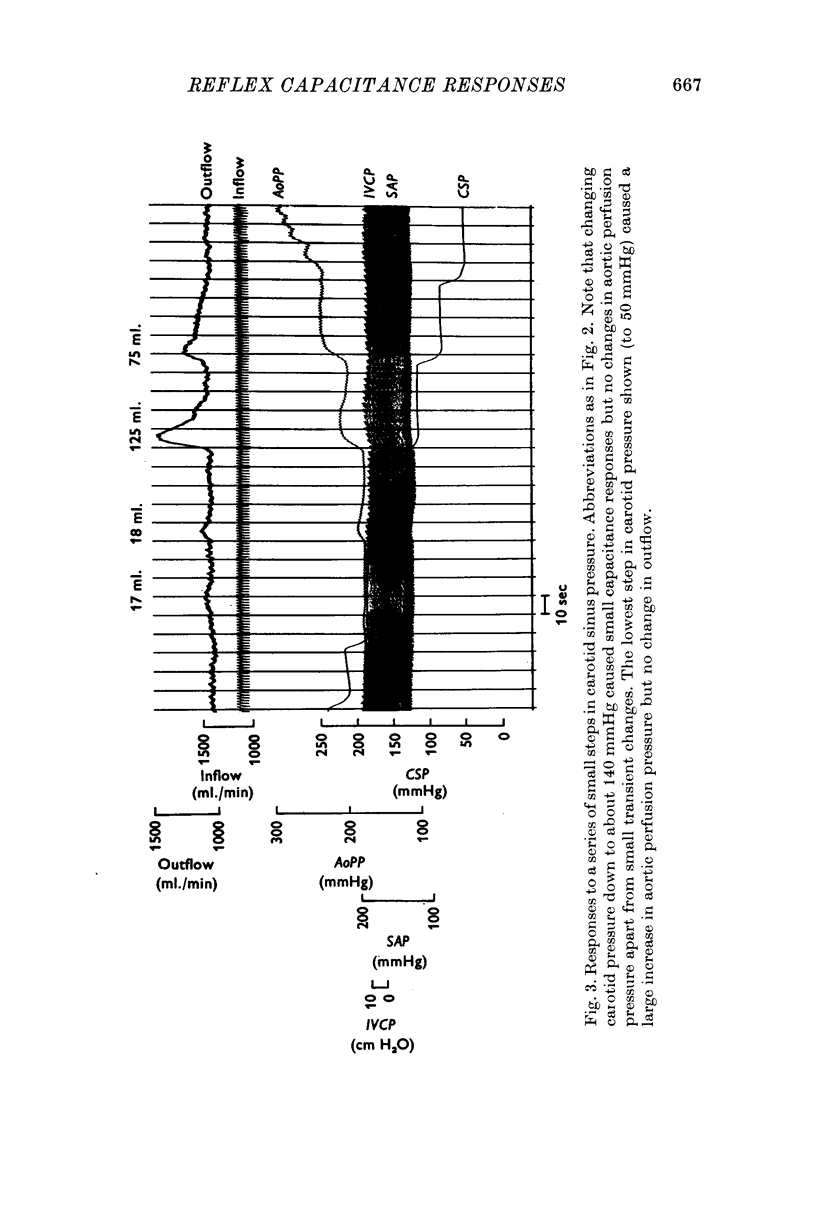
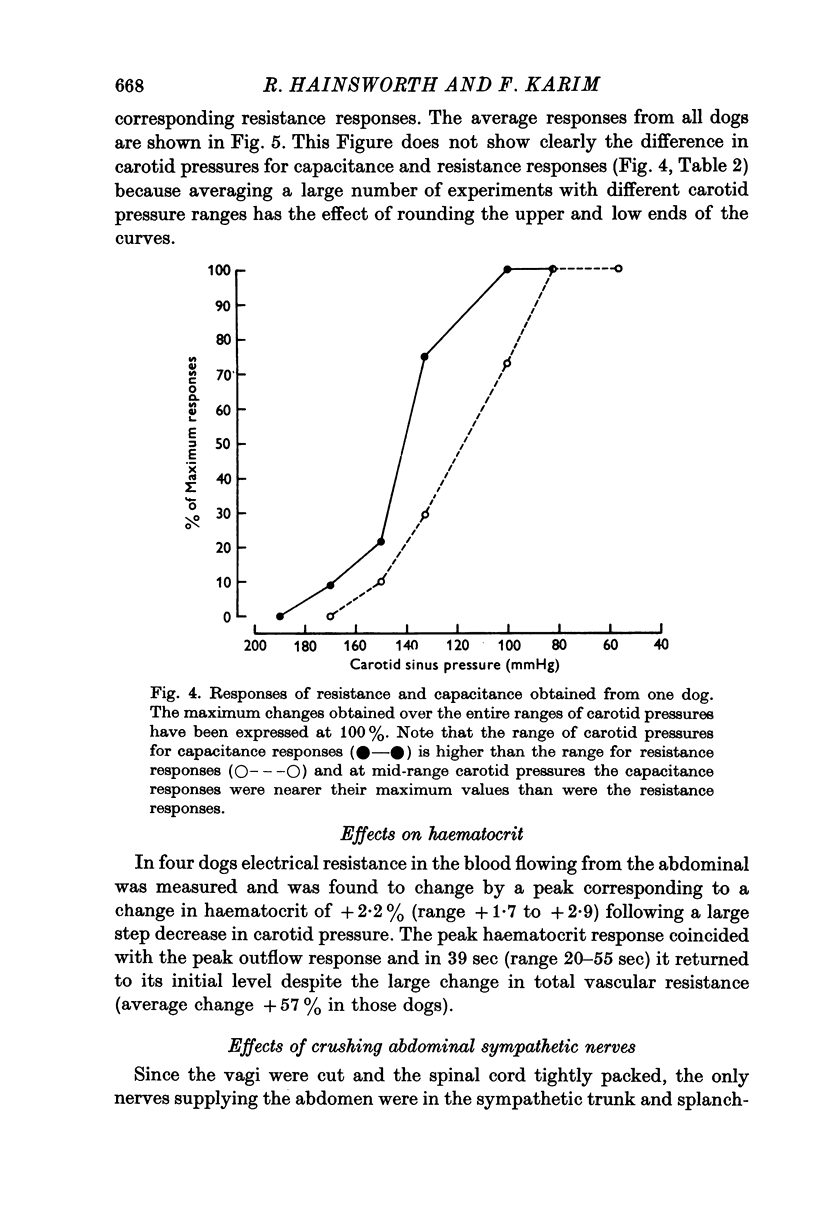
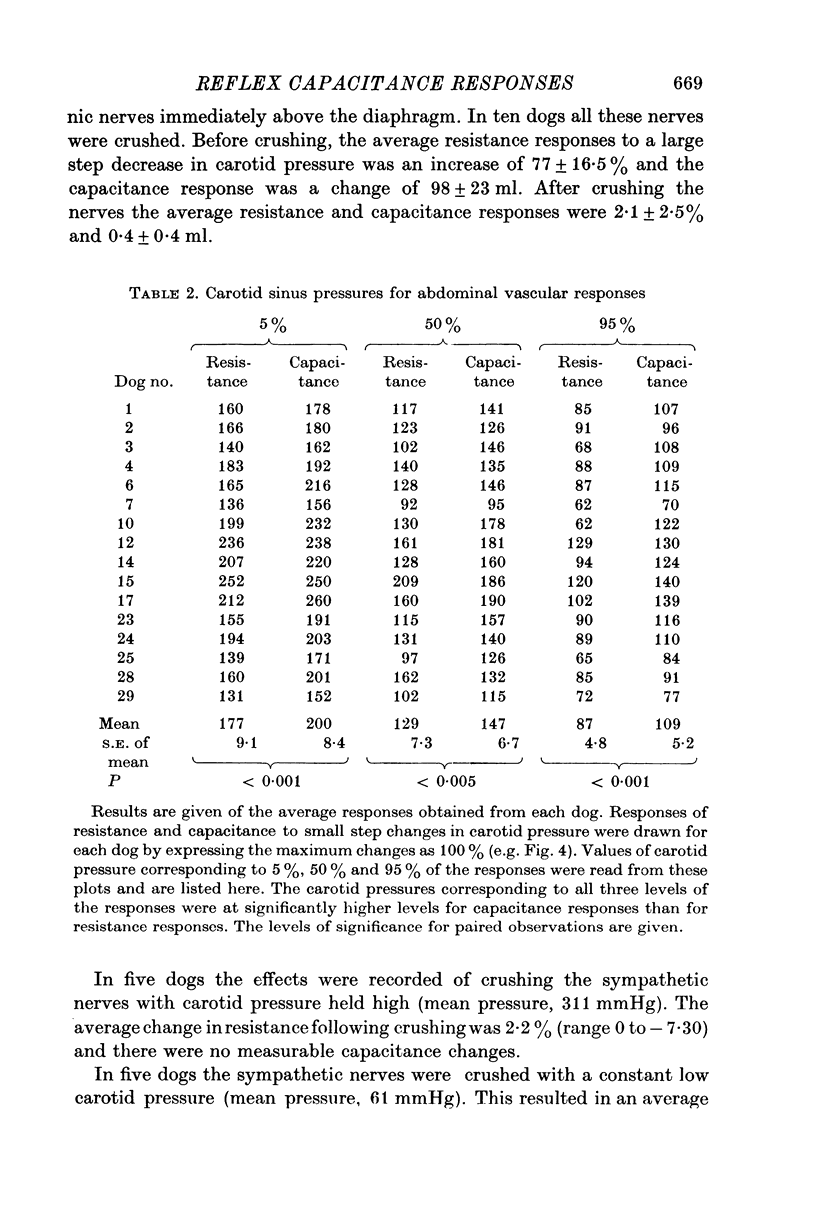
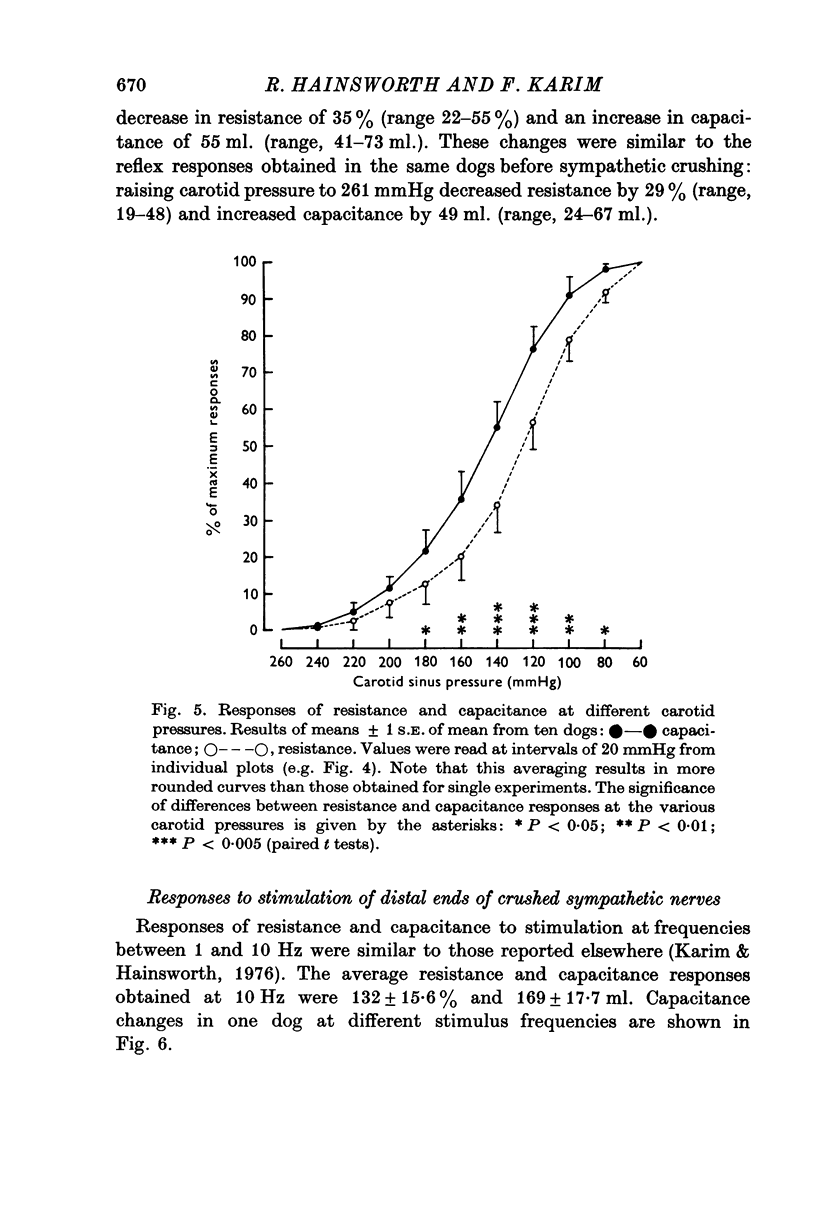
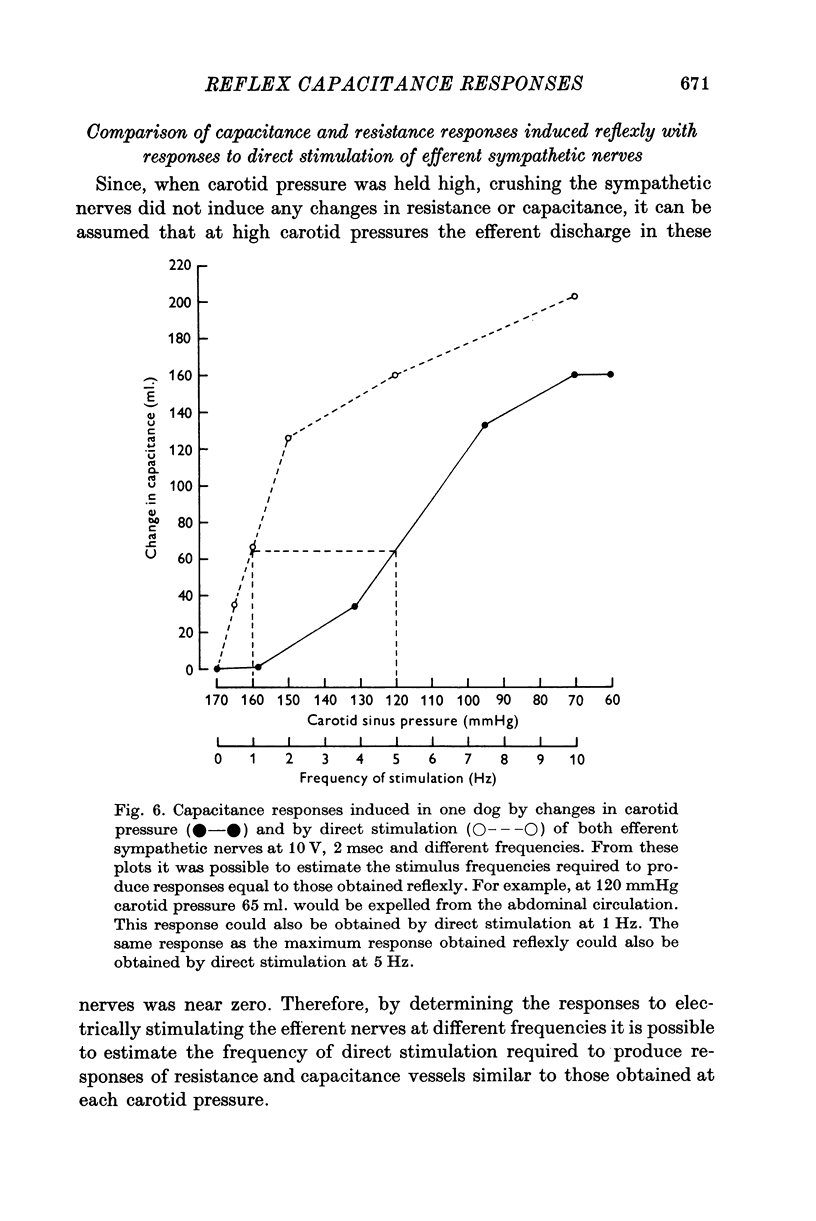
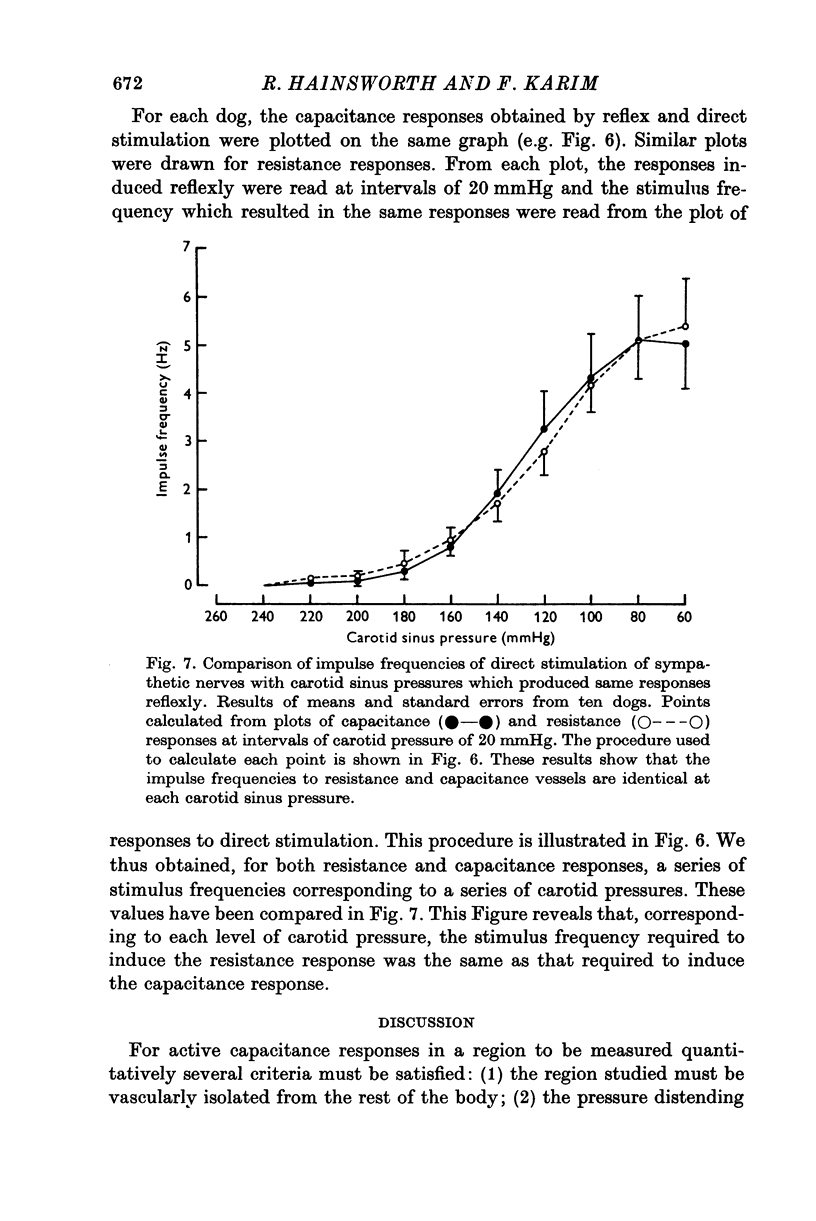

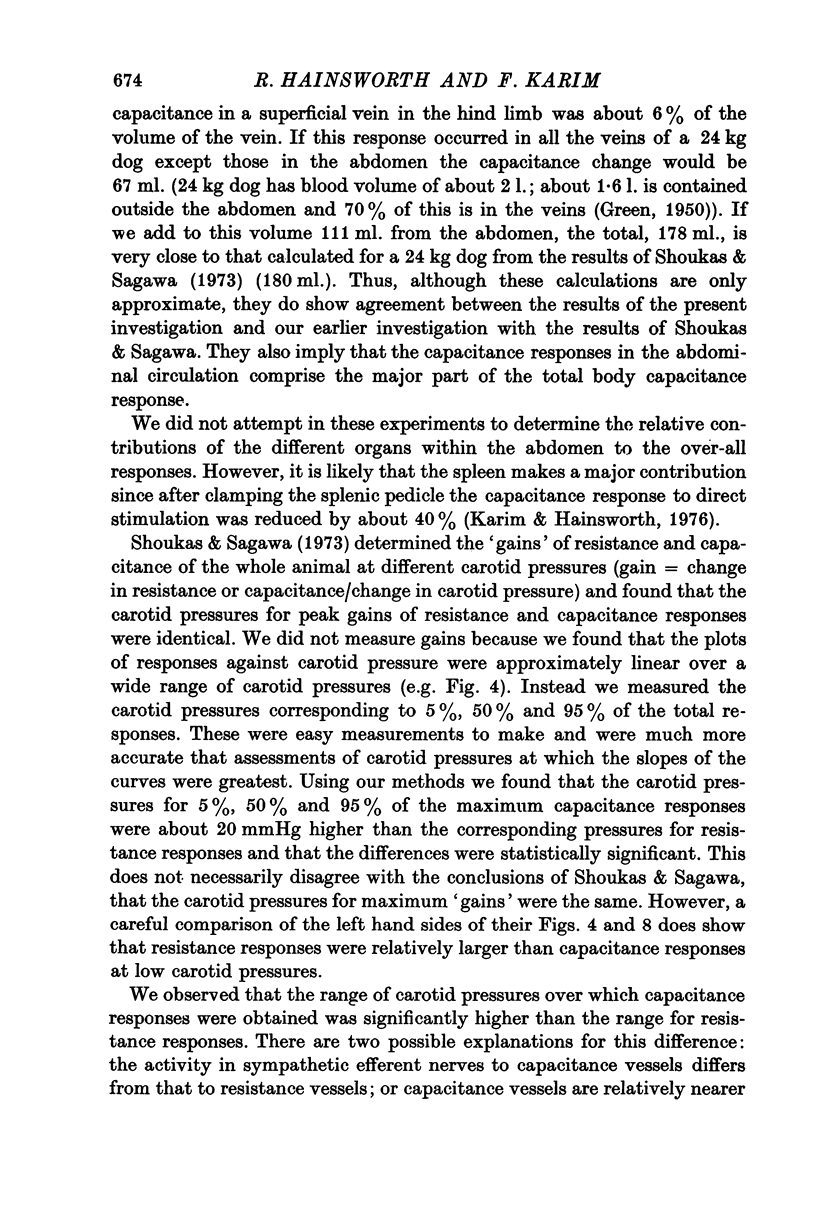
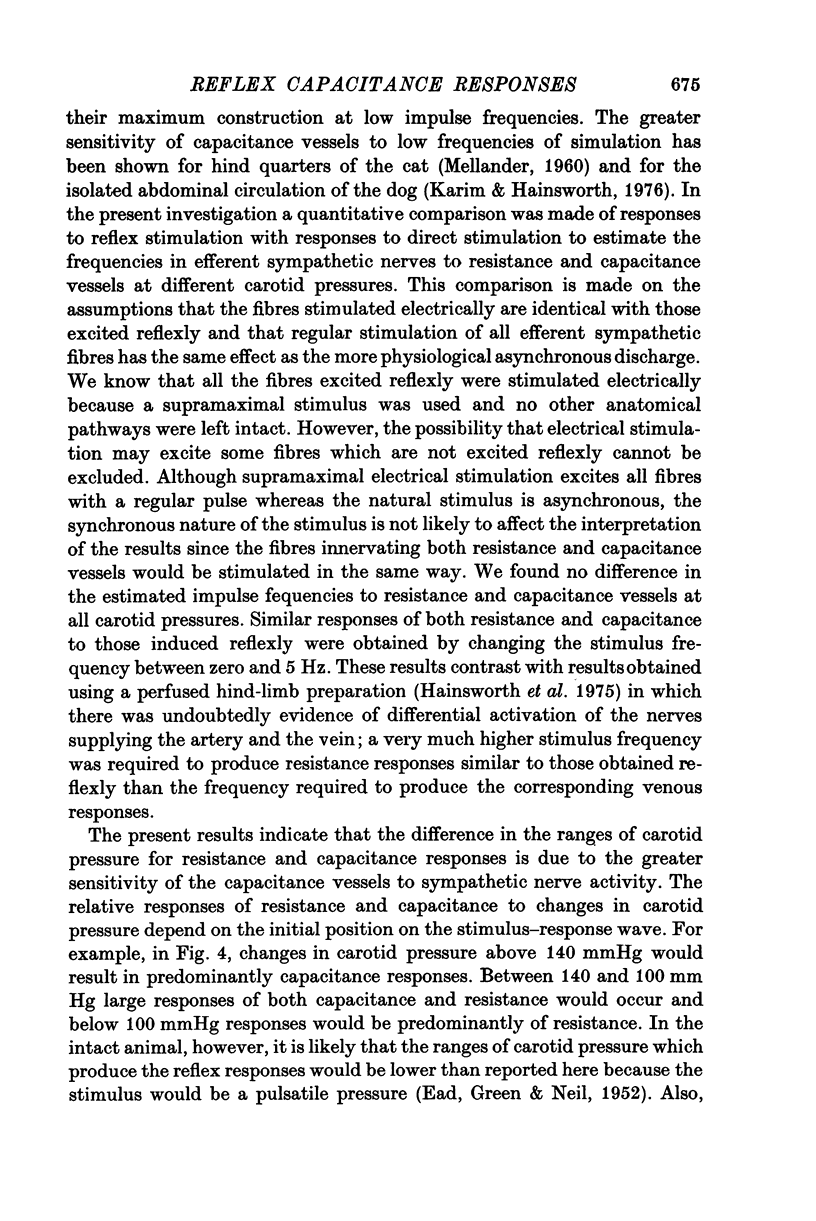
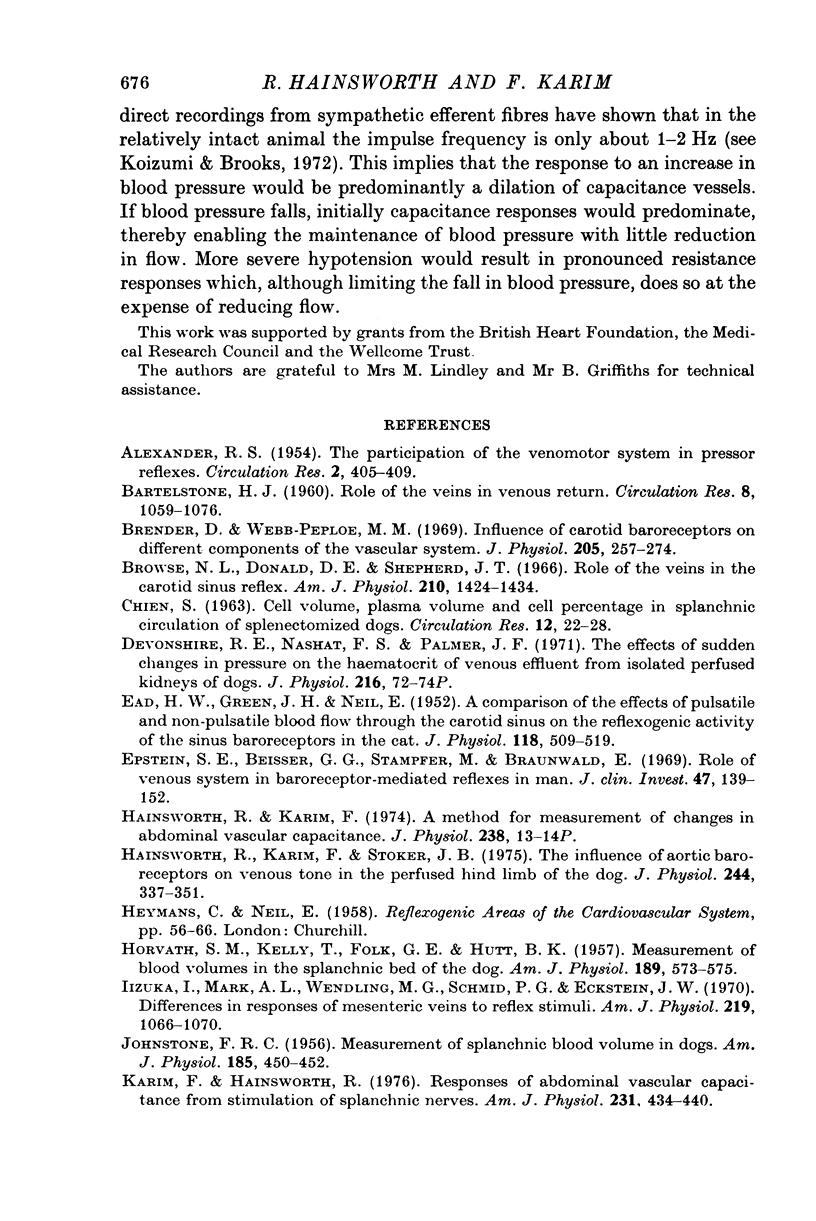
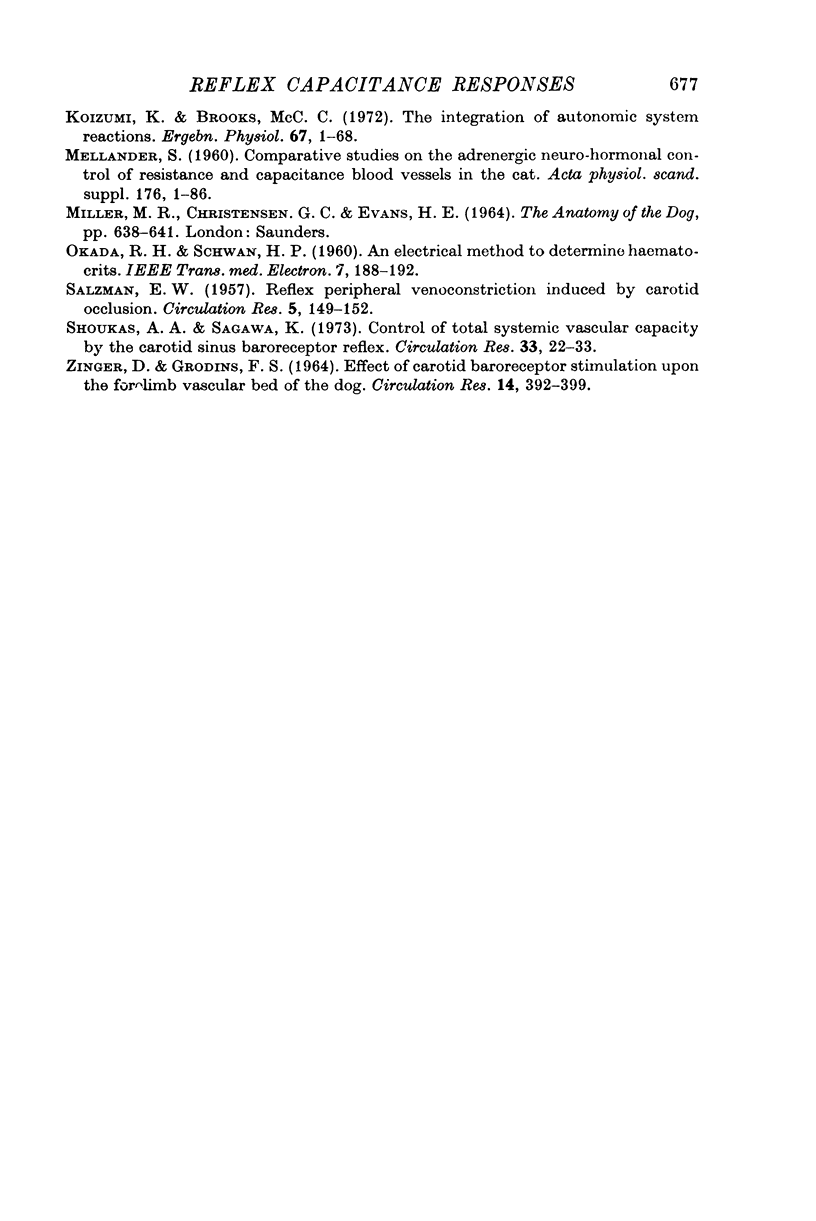
Selected References
These references are in PubMed. This may not be the complete list of references from this article.
- ALEXANDER R. S. The participation of the venomotor system in pressor reflexes. Circ Res. 1954 Sep;2(5):405–409. doi: 10.1161/01.res.2.5.405. [DOI] [PubMed] [Google Scholar]
- BARTELSTONE H. J. Role of the veins in venous retunr. Circ Res. 1960 Sep;8:1059–1076. doi: 10.1161/01.res.8.5.1059. [DOI] [PubMed] [Google Scholar]
- Brender D., Webb-Peploe M. M. Influence of carotid baroreceptors on different components of the vascular system. J Physiol. 1969 Nov;205(2):257–274. doi: 10.1113/jphysiol.1969.sp008963. [DOI] [PMC free article] [PubMed] [Google Scholar]
- Browse N. L., Donald D. E., Shepherd J. T. Role of the veins in the carotid sinus reflex. Am J Physiol. 1966 Jun;210(6):1424–1434. doi: 10.1152/ajplegacy.1966.210.6.1424. [DOI] [PubMed] [Google Scholar]
- CHIEN S. Cell volume, plasma volume and cell percentage in splanchnic circulation of splenectomized dogs. Circ Res. 1963 Jan;12:22–28. doi: 10.1161/01.res.12.1.22. [DOI] [PubMed] [Google Scholar]
- Devonshire R. E., Nashat F. S., Palmer J. F. The effects of sudden changes in pressure on the haematocrit of venous effluent from isolated perfused kidneys of dogs. J Physiol. 1971 Jul;216(2):72P–74P. [PubMed] [Google Scholar]
- EAD H. W., GREEN J. H., NEIL E. A comparison of the effects of pulsatile and non-pulsatile blood flow through the carotid sinus on the reflexogenic activity of the sinus baroceptors in the cat. J Physiol. 1952 Dec;118(4):509–519. doi: 10.1113/jphysiol.1952.sp004812. [DOI] [PMC free article] [PubMed] [Google Scholar]
- Epstein S. E., Beiser G. D., Stampfer M., Braunwald E. Role of the venous system in baroreceptor-mediated reflexes in man. J Clin Invest. 1968 Jan;47(1):139–152. doi: 10.1172/JCI105704. [DOI] [PMC free article] [PubMed] [Google Scholar]
- HORVATH S. M., KELLY T., FOLK G. E., Jr, HUTT B. K. Measurement of blood volumes in the splanchnic bed of the dog. Am J Physiol. 1957 Jun;189(3):573–575. doi: 10.1152/ajplegacy.1957.189.3.573. [DOI] [PubMed] [Google Scholar]
- Hainsworth R., Karim F., Stoker J. B. The influence of aortic baroreceptors on venous tone in the perfused hind limb of the dog. J Physiol. 1975 Jan;244(2):337–351. doi: 10.1113/jphysiol.1975.sp010802. [DOI] [PMC free article] [PubMed] [Google Scholar]
- Iizuka T., Mark A. L., Wendling M. G., Schmid P. G., Eckstein J. W. Differences in responses of saphenous and mesenteric veins to reflex stimuli. Am J Physiol. 1970 Oct;219(4):1066–1070. doi: 10.1152/ajplegacy.1970.219.4.1066. [DOI] [PubMed] [Google Scholar]
- JOHNSTONE F. R. Measurement of splanchnic blood volume in dogs. Am J Physiol. 1956 Jun;185(3):450–452. doi: 10.1152/ajplegacy.1956.185.3.450. [DOI] [PubMed] [Google Scholar]
- Karim F., Hainsworth R. Responses of abdominal vascular capacitance to stimulation of splachnic nerves. Am J Physiol. 1976 Aug;231(2):434–440. doi: 10.1152/ajplegacy.1976.231.2.434. [DOI] [PubMed] [Google Scholar]
- Koizumi K., Brooks C. M. The integration of autonomic system reactions: a discussion of autonomic reflexes, their control and their association with somatic reactions. Ergeb Physiol. 1972;67:1–68. [PubMed] [Google Scholar]
- MELLANDER S. Comparative studies on the adrenergic neuro-hormonal control of resistance and capacitance blood vessels in the cat. Acta Physiol Scand Suppl. 1960;50(176):1–86. [PubMed] [Google Scholar]
- OKADA R. H., SCHWAN H. P. An electrical method to determine hematocrits. IRE Trans Med Electron. 1960 Jul;ME-7:188–192. doi: 10.1109/iret-me.1960.5008044. [DOI] [PubMed] [Google Scholar]
- SALZMAN E. W. Reflex peripheral venoconstriction induced by carotid occlusion. Circ Res. 1957 Mar;5(2):149–152. doi: 10.1161/01.res.5.2.149. [DOI] [PubMed] [Google Scholar]
- Shoukas A. A., Sagawa K. Control of total systemic vascular capacity by the carotid sinus baroreceptor reflex. Circ Res. 1973 Jul;33(1):22–33. doi: 10.1161/01.res.33.1.22. [DOI] [PubMed] [Google Scholar]
- ZINGHER D., GRODINS F. S. EFFECT OF CAROTID BAROCEPTOR STIMULATION UPON THE FORELIMB VASCULAR BED OF THE DOG. Circ Res. 1964 May;14:392–399. doi: 10.1161/01.res.14.5.392. [DOI] [PubMed] [Google Scholar]


